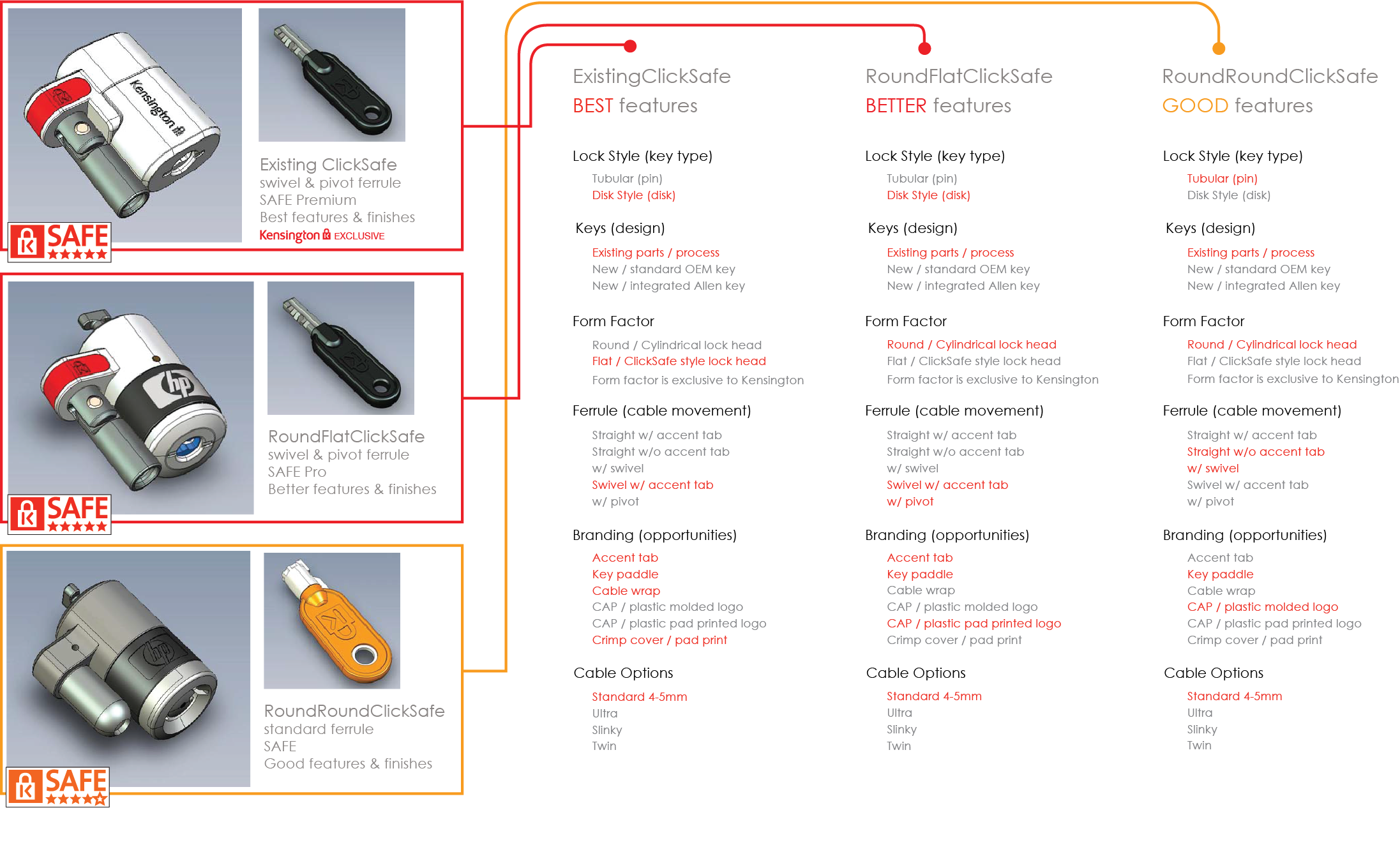Expanding & Protecting a Product Line
Kensington / ACCO Brands
Locks have been around almost as long as thieves… so a long time.
The initial “ask” was to update the aesthetics and usability for three security products. As I dove into the project we started to see the potential for much more and what started out as a simple design project turned into a 5 year exploration. Reimagining and expanding product lines (from 4 products to 36+), securing multiple layers of intelectual property (30+ patents) to protect the business, establishing a fortified brand, introducing new materials and manufacturing techniques, overhauled instruction guide and packaging development processes, multiple industry awards, developed a library of marketing materials, increased usability & security, and much, much more.
Reimagining the Product Offering
We went to great lengths to refine customer-facing attributes of our products across the line by improving user experience, creating consistency across products, and increasing product reliability/security.
Behind the scenes we focused on market expansion and strategic partnerships to grow the business. We leveraged a Design-for-Manufacturing approach to reduce piece-cost (while improving performance) and tactical Intellectual Property development (to assure longevity in our offerings). In all, the team developed dozens of locks/configurations all protected under a robust umbrella of over 30 patents (utility & ornamental). These advancements allowed the brand to stand out from the competition and position itself as the true industry leader.
OEM & Partnerships
With our core product offerings optimized for the user/application and protected by IP, Kensington was the obvious partner for sourcing security product solutions. We capitalized on this opportunity by developing offerings with consideration of three potential end-stages; Kensington exclusive offerings, Co-Branded offerings and Re-Branded offerings.
Product colors, materials and graphics could be easily swapped out per partnership agreement with little-to-no additional cost to Kensington, while increasing our economy of scale through the manufacturer (reducing piece-cost). We also adopted a Design-for-Manufacturing approach and created responsive tooling that allowed for inserts to be added to the mold for additional branding capabilities. This approach prevents the need for additional tooling and positioned Kensington as a responsive partner, offering best in class product.
Common Components Configurator
Seeing the impact of Design-for-Manufacturing on the business we decided to move from designing each security product in a “vacuum” to designing a systems approach across the line. Our chassis-system of parts and interactions allowed us to leverage existing tooling and inventory across the entire product line introducing efficiencies of scale and expediting development efforts. Our Common Component Configurator also allowed us to respond to specific/niche application scenarios and sales requests at lightning speed and with greater accuracy in forecast SKU cost and launch dates.
Our responsive system allowed Kensington to meet and grow with customer and market needs as they evolve alongside technology. We had also, unknowingly, created a monster. With dozens of potential configurations our sales team and customers faced analysis paralysis. This realization led to the creation of the SAFE Rating System (below).
SAFE Rating & Sales
Our products were best in class, heavily protected by IP, and we had positioned the company to be the ideal product partner regardless of scenario or application… but we had created a new hurdle for the sales team and the customer- too many offerings.
In response, and working with the sales team, we organized our offerings into four easy to understand levels of security. Each level was based on industry testing parameters as well as our internal considerations like materials used in production, fit & finish, and warranty period. This approach not only provided an easy way for our sales team to introduce the proper solution based on customer need, but also an excellent sales tool for them to compare our product performance against that of our competitors (using third party testing houses). The SAFE System also allowed for consolidation of existing offerings and informed the development roadmap in order to create balance across our portfolio of offerings.








